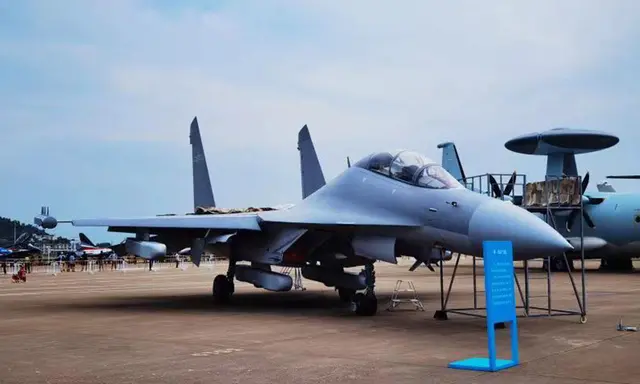The J-16D electronic warfare aircraft of the Chinese People’s Liberation Army (PLA) Air Force was spotted for the first time in an apparent exercise near the island of Taiwan on Monday, right after two US aircraft carriers sailed from waters east of the island into the South China Sea a day earlier.
The J-16D excels at seizing control of the electromagnetic field, and its participation in the drill near Taiwan is combat-oriented, as the aircraft is making preparations for possible scenarios in the future, analysts said.
A total of 13 PLA aircraft, namely eight J-16 fighter jets, a Y-8 anti-submarine warfare aircraft, two H-6 bombers and two J-16D electronic warfare aircraft, entered Taiwan’s self-proclaimed southwest air defense identification zone on Monday, the defense authority on the island of Taiwan said.
This is the first time Taiwan’s defense authority has reported the sighting of the J-16D electronic warfare aircraft, observers said, noting that a larger PLA drill took place a day before with 39 aircraft but without a J-16D.
The J-16D made its first public appearance in September at the Airshow China 2021. The PLA Air Force announced that the aircraft entered combat training in November.
At the air show, the J-16D was equipped with four jamming pods under its wings and air inlets, as well as two missiles under its belly, in addition to the two electronic warfare pods on the wingtips.
It is interesting to see that Taiwan’s defense authority failed to post a photo of the J-16D taken today and instead used a file photo of a J-16D on display at the Airshow China 2021, said a Beijing-based military expert who requested anonymity.
This makes people question if Taiwan understands the real situation, since the J-16D is capable of electromagnetic disruptions and deception, the expert told the Global Times on Monday. “If they cannot make an optic observation, how can they be so sure that all 13 aircraft were real, or no additional aircraft were hidden due to the J-16D’s capabilities?”
Song Zhongping, a Chinese mainland military commentator, told the Global Times on Monday that PLA warplanes usually operate in groups and systems. For example, the J-10 plays a role of an escort, the J-16 conducts strikes and the H-6 carries out long-range attacks. In addition, communication countermeasures aircraft and electronic reconnaissance aircraft will guide the group to the targets.
J-16D is an electronic warfare fighter designed to seize control of the electromagnetic field, Song said, noting that it can help a group of warplanes to seize not only control of the air, but control of the electromagnetic field.
In a possible combat, the J-16D can coordinate with the J-20 stealth fighter jet, as well as J-16 and J-10C fighter jets to seize control of information and air superiority across the Taiwan Straits, experts said.
Another expert told the Global Times on condition of anonymity that J-16D can detect, collect, record and analyze the targets' radio signals, including those from the Taiwan armed forces’ radar. It can also disrupt hostile missiles and protect other friendly aircraft.
On the same day, the US Department of Defense said that two US aircraft carrier groups entered the South China Sea for training, Reuters reported on Monday.
The two US carrier groups, led by the USS Carl Vinson and the USS Abraham Lincoln aircraft carriers, began operations in the South China Sea on Sunday, the US Defense Department said. On Saturday, the two carriers wrapped up a US-Japan joint exercise in the Philippine Sea south of Okinawa, which is to the east of the island of Taiwan.
Analysts said that the two US aircraft carrier strike groups came to the South China Sea after finishing joint exercises with Japan, so there is a high possibility that they were exercising long-distance raids and trying to demonstrate the power of deterrence.
While the PLA’s drills are routine and not necessarily aimed at any target, they displayed their firm will and capability to safeguard national sovereignty and territorial integrity, analysts said.
(Global Times)
 简体中文
简体中文

